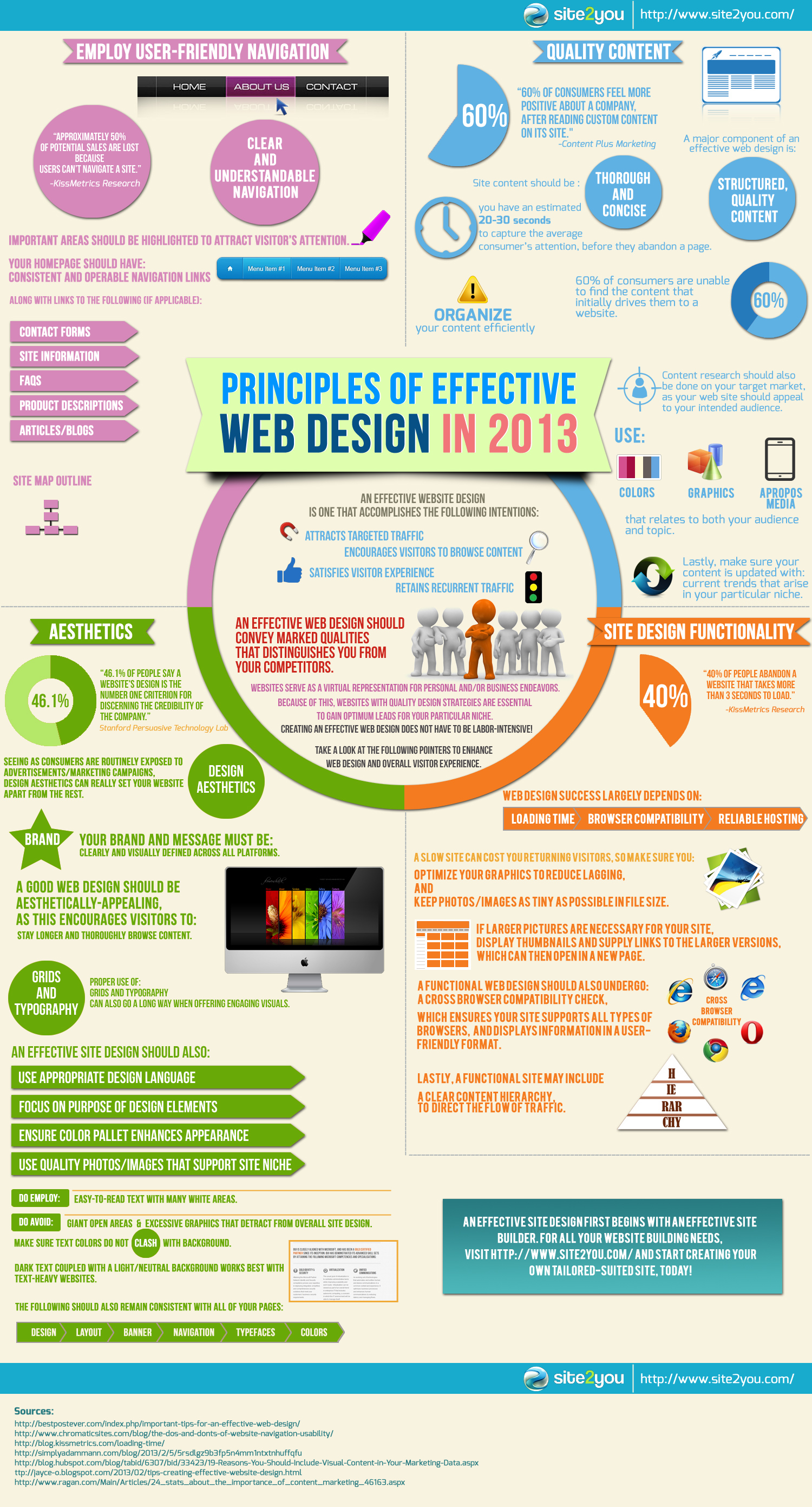Core Concepts Of Internet Site Layout: Suggestions For Crafting A User-Friendly Online Visibility
Core Concepts Of Internet Site Layout: Suggestions For Crafting A User-Friendly Online Visibility
Blog Article
Authored By-Wiley Neville
When it involves site design, guaranteeing user-friendliness is key. From responsive style to structured navigating, every element plays an essential duty in creating a site that satisfies your audience's demands. But what regarding the finer information that can make or damage a user's browsing experience? Remain tuned as we discover some often-overlooked ideas that can boost your website's functionality to the next level, making it truly stick out in the digital landscape.
Value of Responsive Style
Responsive design is a vital element of modern-day web site development. Ensuring your web site is responsive means that it can adjust to different screen dimensions and gadgets, offering a seamless experience for individuals.
With the raising use smart devices and tablets to access the web, having a receptive style is vital for getting to a larger audience. It assists in boosting customer experience by making your web site easy to browse and keep reading any type of device.
In addition, receptive design can favorably influence your online search engine rankings, as search engines like Google focus on mobile-friendly sites. By having a responsive design, you're additionally future-proofing your internet site, as new tools with varying display dimensions continue to arise.
Simplify Navigating Structure
To boost user experience and promote very easy access to info on your site, improving the navigation framework is paramount. When creating your site, concentrate on developing a clear and user-friendly navigating food selection that helps site visitors find what they're searching for swiftly.
mouse click the up coming document of menu products to the fundamentals, organizing associated web pages with each other to avoid frustrating users. Usage detailed tags that clearly suggest the content of each page, making it much easier for customers to understand where each link will certainly take them.
Think about executing dropdown food selections for subcategories to avoid littering the primary navigation bar. In addition, consist of a search bar prominently on the web page for customers who favor looking for details details.
Visit Web Page on mobile responsiveness in your navigating style to guarantee easy gain access to on all gadgets.
Enhance Page Load Rate
Improving page lots rate is important for keeping visitors on your internet site. Slow-loading web pages irritate individuals and can result in high bounce rates. To maximize page tons rate, start by maximizing images. Compress images without endangering quality to decrease their data dimensions.
Furthermore, make it possible for browser caching to keep often accessed sources locally, quickening load times for returning visitors. Minify CSS, JavaScript, and HTML data by eliminating unnecessary characters, comments, and format, enhancing lots speed.
Think about utilizing a material delivery network (CDN) to disperse your internet site's web content across several servers worldwide, decreasing latency for customers accessing your site from various places. Finally, limit using third-party manuscripts and plugins, as they can dramatically impact load times.
Verdict
Finally, by integrating responsive design, streamlining navigation, and maximizing page load rate, you can develop an user-friendly internet site that appeals to a bigger audience and boosts customer experience. These essential elements ensure that site visitors can conveniently gain access to and navigate your site throughout various tools, resulting in increased involvement and fulfillment. By concentrating on these essential aspects, you can develop a successful internet site that keeps customers coming back for more.
